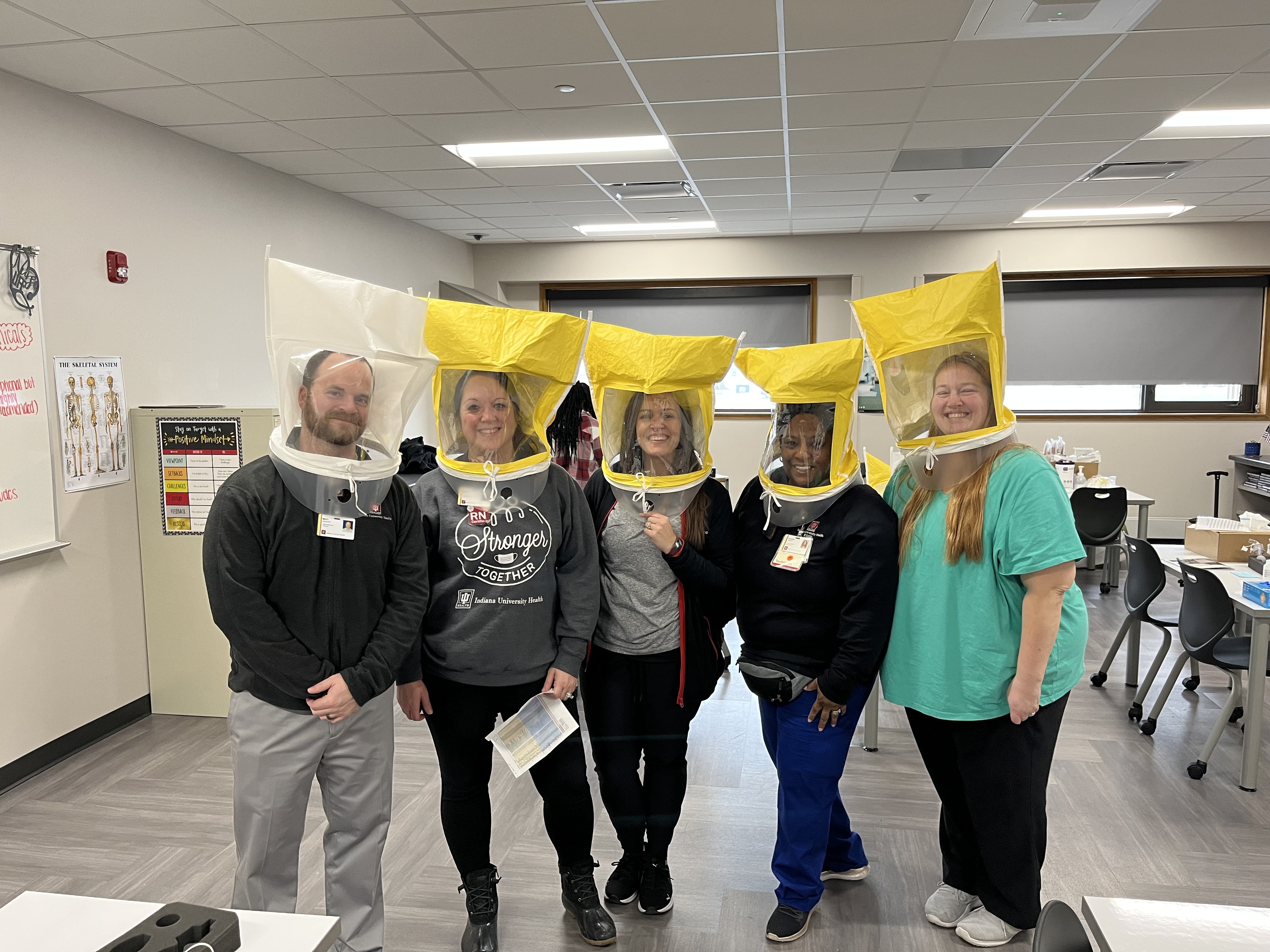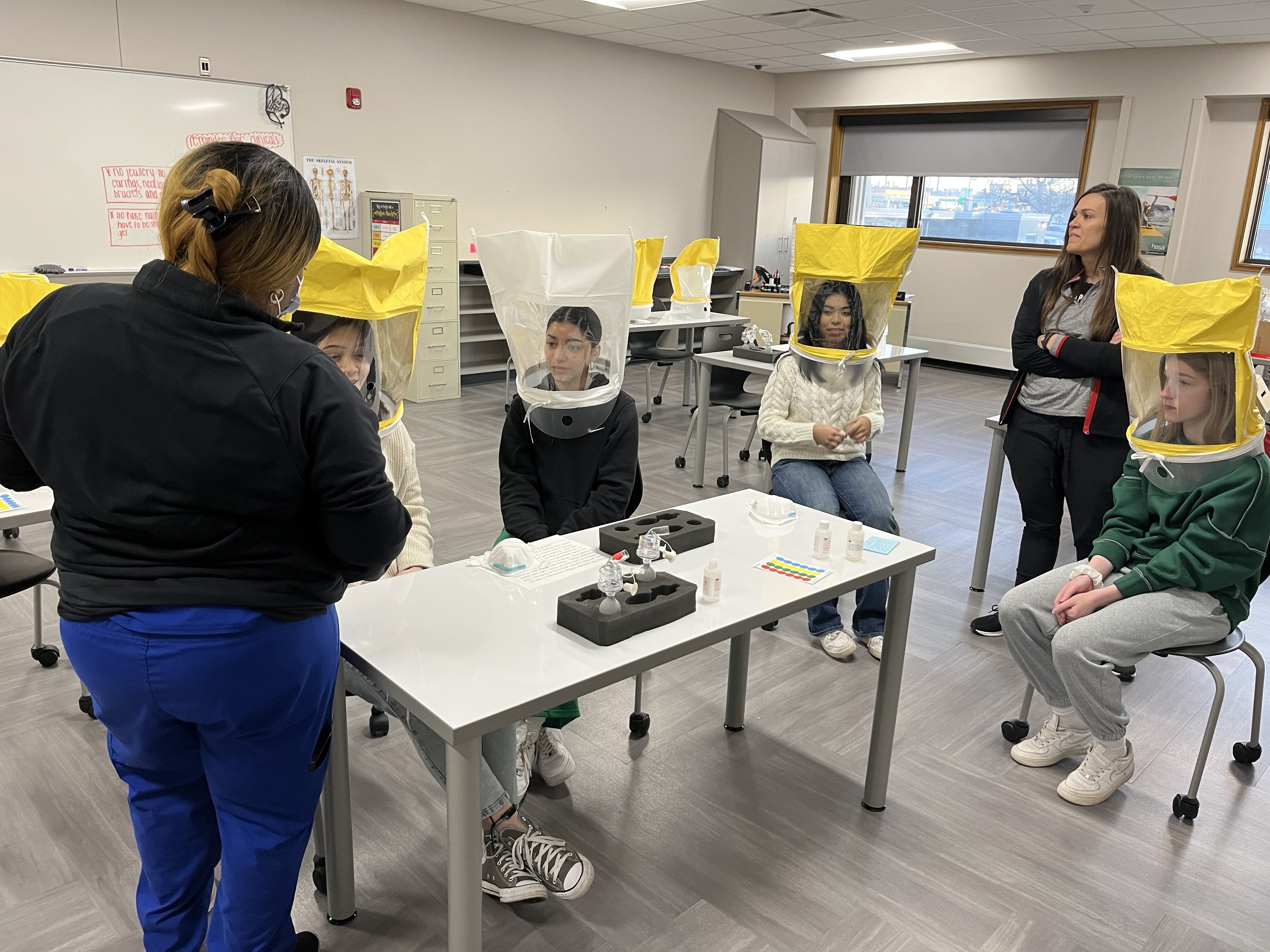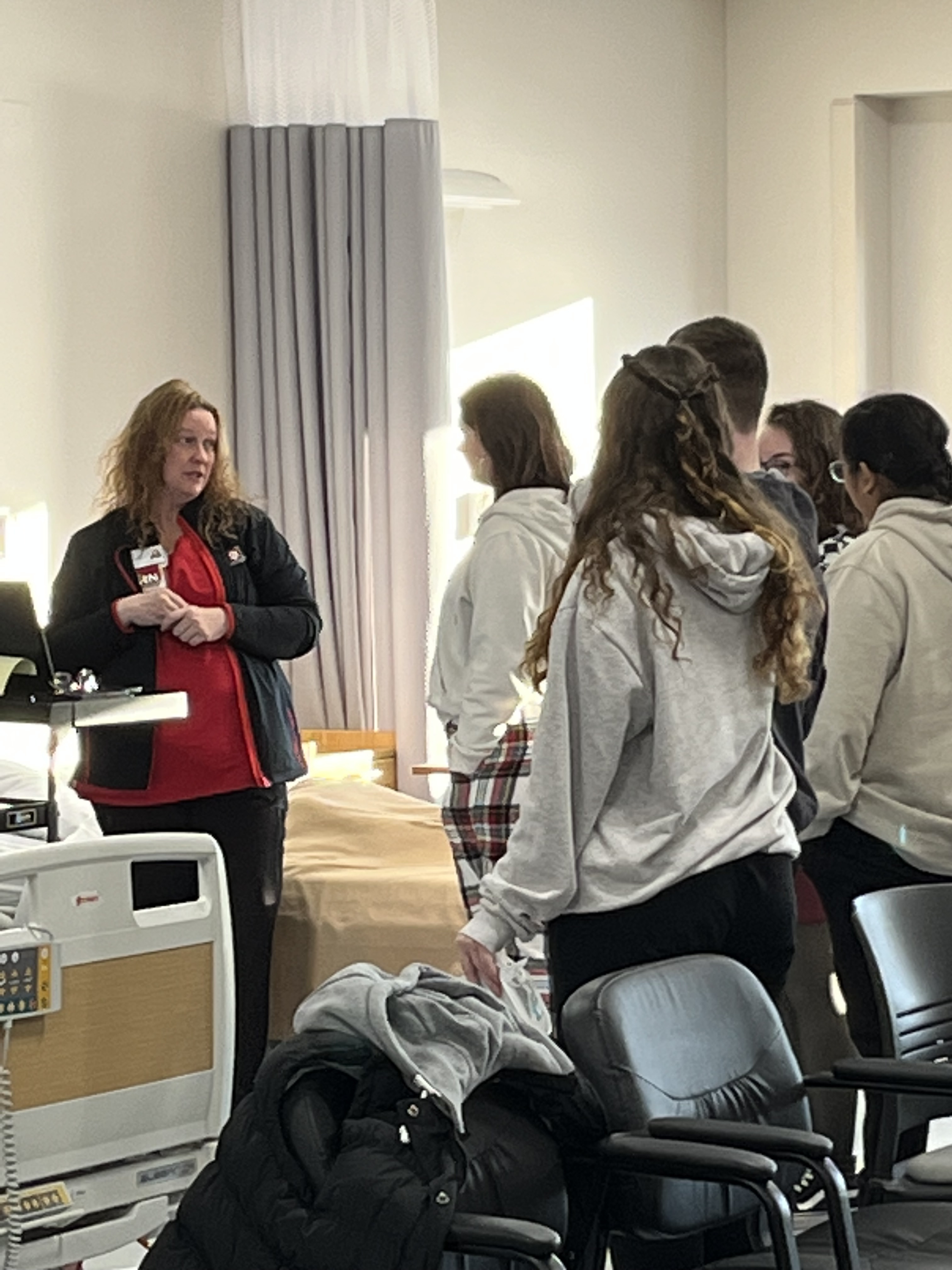“Nationally, the number of available jobs outpaces the number of available applicants. Healthcare is not immune,” says Matt DeGolyer, talent acquisition team lead for the West Central Region. “Today, talent acquisition requires proactive recruiting in the form of talent pipelines.”
The West Central Region of IU Health has led the way in developing a playbook for talent pipelines that not only benefits the organization, but also gives local students a meaningful opportunity to explore and decide if a career in healthcare is right for them.

Building the playbook
Working with local high schools, several team members, including DeGolyer, Kathy Moon, MSN, RN, NPD-BC, director of nursing practice and Renea Smith, MSN, BSN, RN, NE-BC, chief nursing officer for IU Health Frankfort and White Memorial hospitals, built a program from the ground up.
“We created a career awareness survey to assess the type of talent we have in our own backyard,” explains DeGolyer. “Figuring the average commute time is 30 minutes to any of our locations — that includes 38 school districts.”
Each school district was asked to complete a survey, and 32 of the 38 responded. The next step was to build relationships with school personnel and share opportunities for interested students.
Then a survey was sent to high school students in grades 9 – 12 with 5,500 students responding. Of those responding, 1,200 were interested in a career in healthcare and 1,200 were undecided on their next steps.
“When we can get in front of the students, we ask what kind of jobs come to mind when we say a career in healthcare? Many respond doctors and nurses,” says Smith. “We need providers and nurses, but our goal is to also show them there are so many options they may have not considered like MRI techs, nutrition, maintenance and more.”
The Crossing at Frankfort was the first formal stop in speaking with a small group of diverse students. They were the first students to formally job shadow.

The Greater Lafayette Career Academy (GLCA), a partnership between multiple school corporations in Tippecanoe County, was the next focus due to its size and established programs. GLCA has programs that lead to in-demand certifications like certified nursing assistant (CNA) medical assistant (MA) and emergency medical technician (EMT).
“We wanted to cast a broader net, which encompasses the entire West Central Region of IU Health,” says Smith. “Our goal was to work with all high schools that would feed into all three hospitals in our region — Arnett, Frankfort and White Memorial — and talk about all career path programs to offer the structure of both job shadow and clinical placements.”
Job shadowing and clinical opportunities
Over 2,000 students indicated they would like an opportunity to job shadow, which can begin at age 14.
Each student was paired with an IU Health team member and assigned to a job shadowing opportunity ranging from a few hours, an entire day or more. To make the experience even more representative of what it’s like to start a true career in healthcare, each student received an official welcome letter sharing what to wear, where to meet and who will be meeting them.

“You can’t be what you can’t see,” says DeGolyer, explaining why giving students exposure to healthcare careers is important. “People tend to go where they know. Now those students have a relationship with IU Health.”
The working slogan to highlight the relationship-centered approach, became ‘You go where you know.’
Whereas the job shadowing structure is a great way to grow interest in healthcare related careers, clinical rotations are the best way for students that are already in healthcare courses to gain experience and complete their required clinical rotations for certification. Students who applied to do clinicals, like all team members, had to go through drug screening, vaccinations, fit testing and other requirements for employment.
“Our hope was to challenge the students,” says Moon. “If you don’t know what you want to do, let us help you explore. If you know what you want to do, let us put you in that department, yet challenge you to explore other areas.”
Next up, a career
“After their clinical rotations, these students will graduate high school and will be certified as an CNA, MA or EMT and may immediately join our team,” says Smith. “If further education is the plan, their experience with us can significantly impact their studies, helping them get through quicker because they have already completed 40 hours of clinicals.”
“It gets your wheels turning on the importance of making intentional connections with local youth,” says DeGolyer. “We can hire students at the age of 16. They have their foot in the door and can begin thinking about long term employment opportunities with IU Health.”
The playbook has been written.
“It has been great. Students have been hired already. It is a great return on investment,” says Smith, adding, “it has been cup-filling work.”
